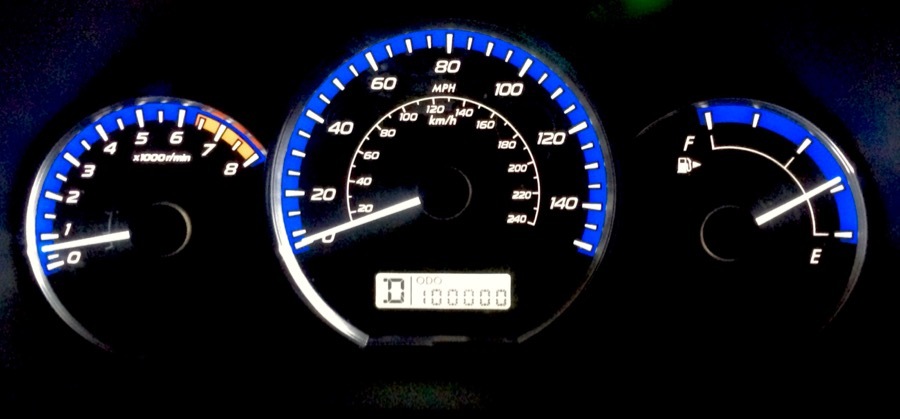My first year in my three-parish assignment was also one of the snowiest years on record. After the third snowfall of 14+ inches, I decided it was time for a vehicle with all-wheel drive. I took delivery of my new Subaru Forester on the feast of St. Anthony in 2011. It was the year of the tsunami and nuclear reactor meltdown; not a good time to buy a Japanese vehicle. But the shortage hadn't driven the price up, and I still got the color and options I was looking for. I resolved to drive it for 200,000 miles or 10 years, whichever came first.
I just recently passed the half-way mark. The dealership, hoping to get me to trade in my vehicle, sent me an email with its trade-in value. It has lost $10,000 of value. That means I spent 10 cents per mile for the privilege of owning the vehicle, before you even start to include insurance, licensing, gas and maintenance.
What's a Service Interval?
Speaking of maintenance, I've learned a lot about maintaining a vehicle. For the first couple years I drove it back to the dealership for every service interval. All I knew was that it needed an oil change every 7500 miles. I assumed the dealership would do the rest. It didn't work out like that. They always asked, "What are we doing today?", as though I knew. Their service suggestions were not necessarily helpful either. Like when the serviceman said it would need a coolant flush, then told me at pickup that they didn't flush the coolant because it's first flush was at 137,000 miles. Really?
Finally I sat down for a heart-to-heart with the owner's manual. I looked through the charts and compiled a list of the services it needed at each interval. I compared that to the dealer's price sheets and my service receipts. Finally I put it all in a spreadsheet. Suddenly it all came together. I could see the services I had missed and all the upcoming work. I'll include a link at the end if you're interested. After all, keeping my vehicle maintained is really my job. And it's a good feeling at the service counter to list off to the tech exactly what my vehicle needs at that interval. #feelingmanly
Learning to Enjoy the Ride
It's been a great vehicle. I've crammed Christmas trees and church altars inside and thrown canoes on top. I thank God often for a vehicle that starts on command and runs faithfully. I appreciate the simple but functional design. You know how every daylight savings time you can't remember how to change the clock? This one has two buttons next to the clock, + and -. I'll let you figure out how they work. Good design is both simple and beautiful. And it stands the test of time. I'm looking forward to the next 100,000 miles. After that I'll start to think about trading it in.
How to Build Your Own Maintenance Spreadsheet
Here's a brief explanation of the spreadsheet. The first column is the maintenance items. The second column is the text information about each item. I took those from the manual and checked it by meeting with the maintenance supervisor at the dealership. The top row contains the mileage intervals for the oil changes. That's your basic "service interval" (for most cars is probably 5,000 miles). Now, here's the wizardly part. You color the boxes gray when it doesn't need service, and white when it does. All you are really doing is creating a visual representation of the information in the second column. As you get the service done you can enter the date in the box closest to the mileage at the time of service. Voilà! Service record for dummies.
